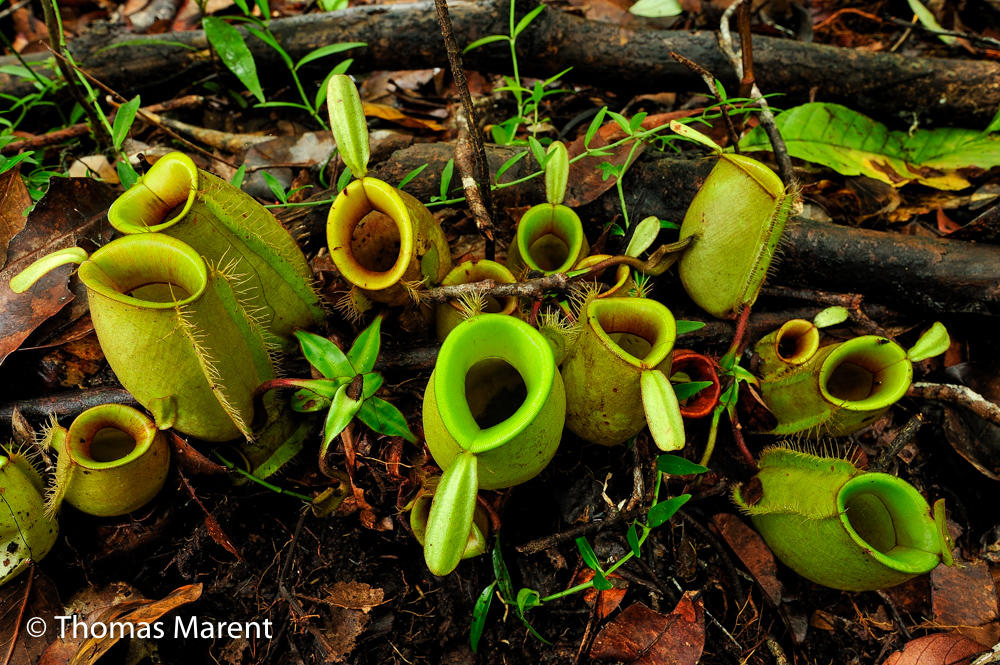How Do Pitcher Plants Adapt to the Rainforest
The soil in the rainforest can be nutrient poor so the pitcher plant uses its brightly coloured leaves and nectar to attract insects. Many lianas start life in the rainforest canopy and send roots down to the ground.

Tropical Pitcher Plant San Diego Zoo Animals Plants
This is why rainforest plants should not be watered regularly.

. Pitcher plants have distinctive adaptations for living in nutrient-poor soils. These carnivorous plants produce a pitcher-shaped structure with a pool of water in it. These roots let them find water even when other parts of the plant have gone dry.
Venus Flytrap Venus flytraps Dionaea muscipula are native to the nutrient deficient swamplands and bogs of North and South Carolina. The pitcher looks like a jug or pitcher on the plant has a smell to attract or trick the insects. Do you think rainforest plants and.
But in the rainforest that tree is surrounded by other trees and plants so without cutting down a huge swath of forest theres really no way to photograph only the tree by itself. Because they are adapted to tropical areas and rainforests they do not like cold temperatures. They are called Epiphytes.
Carnivorous plants are meat-eating plants that attract insects using smelly nectar and then trap them. How have pitcher plants adapted to the rainforest. In drier temperate deciduous forests a thick bark helps to limit moisture evaporation from.
Rainforest soils are poor and most nutrients are in the top layers so roots are generally. 45 Votes They have adapted to life in the rainforest by having their roots in the ground and climbing high into the tree canopy to reach available sunlight. These carnivorous plants produce a pitcher-shaped structure with a.
The Pitcher Plant is most commonly known as Nepenthes or Sarracenia and has a very distinctive adaptation. Pitcher plants have evolved to become carnivorous because of an extreme lack of mineral nutrition and that is what they thrive on. Similar to other plants with green leaves pitcher plants possess chloroplasts that contain chlorophyll to trap sunlight for photosynthesis to make food.
If Heliconia freeze they will usually die back to the ground but in warm climates their underground roots will regenerate new shoots. This would be harmful for them. Some plants have adapted to grow on other plants in the understorey or high up in the canopy.
In the Rainforest Plants have an extra struggle to survive as they seek the sun through layers of vegetation with extreme heat and humidity. How Do Plants Adapt to Their Environment. Such an adaptation prevents the growth of algae on the leaves which would otherwise block sunlight and reduce the ability of plants to perform photosynthesis.
445 1663 Views. The insects and sometimes small animals such as frogs fall into the bowl of the plant where they become trapped and dissolve in the. Up to 24 cash back Its Amazing Adaptation.
Find an epiphyte and draw a picture of it you could choose the pitcher plant or a bromeliad or an orchid. Some plants have adapted to live in sandy soils by using thick roots that go down deep into the soil. Pitcher Plants The pitcher plant has developed a unique way to source nutrients.
Explore the variety of plants that live in rainforests. Many lianas start life in the rainforest canopy and send roots down to the ground. The pitcher also has a lid which stops the rain getting in when it is full of acid.
The leaves of forest trees have adapted to cope with exceptionally high rainfall. Pitcher plant vines have leaves that form a pitcher. The Pitcher Plant and other carnivorous plants like.
Discover the different types of plants and their characteristics as well as the adaptations they developed to survive in a rainforest biome. Thus leaves on plants growing in tropical rainforests are often arranged at. The function of chloroplasts should already be at your fingertips.
These are modified leaves that give the pitcher plants their infamous name to trap ill-fated insects using their relentless adaptations. When insects investigate they slide into the pitcher and meet a. They are found in nutrient deficient soils and thus have adapted a particular means for acquiring essential nutrients.
When an insect lands on the rim of one of the pitchers it slips down inside. The pitcher plants of the rainforest 0. The insect drowns in acid and the pitcher plant eats it up.
The rest of the plant contains chemicals that kill bacteria or fungi that might harm the plant. 11 Votes They have adapted to life in the rainforest by having their roots in the ground and climbing high into the tree canopy to reach available sunlight. It has become a carnivorous plant due to poor nutrient soil living conditions.
This magnificent adaption has taken over a million years to happen. It cant get out because of the sticky hairs inside. Pitcher plants have distinctive adaptations for living in nutrient-poor soils.
The leaves of forest trees have adapted to cope with exceptionally high rainfall. 435 481 Views. Leaf Angling - Little sunlight penetrates below the canopy layer in the rainforest due to the dense growth of plants.

Tropical Pitcher Plant San Diego Zoo Animals Plants



Comments
Post a Comment